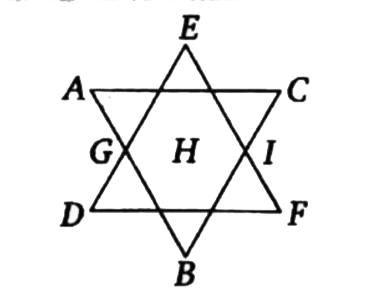Consider a hypothetical situation where we are comparing the properties of two crystals made of atom A and atom B. Potential energy (U)v/s interatomic separation (r) graph for atom A and atom B is shown in figure (i) and (ii) and respectively.
_E01_202_Q01.png)
Choose correct statement
Volume of A and B expand on heating
Volume of A and B contract on heating
A expands on heating and B contracts on heating
A contracts on heating and B expands on heating
The correct Answer is:C
On increasing temperature (giving heat) , U increases. Now ravg increases for A while decreases for B.
Topper's Solved these Questions
- GEOMETRICAL OPTICSBOOK - ALLENCHAPTER - GEOMETRICAL OPTICSEXERCISE - EXERCISE - 04 (A)
48 Videos
- GEOMETRICAL OPTICSBOOK - ALLENCHAPTER - GEOMETRICAL OPTICSEXERCISE - EXERCISE - 04 (B)
15 Videos
- GEOMETRICAL OPTICSBOOK - ALLENCHAPTER - GEOMETRICAL OPTICSEXERCISE - ASSERTION-REASON
40 Videos
- CURRENT ELECTRICITYBOOK - ALLENCHAPTER - CURRENT ELECTRICITYEXERCISE - All Questions
427 Videos
- GRAVITATIONBOOK - ALLENCHAPTER - GRAVITATIONEXERCISE - EXERCISE 4
9 Videos
Similar Questions
Consider a hypothetical situation where we are comparing the properties of two crystals made of atom A and atom B. Potential energy (U)v/s interatomic separation (r) graph for atom A and atom B is shown in figure (i) and (ii) and respectively.
_E01_204_Q01.png)
It is seen that the potential energy can reach a maximum value of UT at temperature T=10K. if r1 and r2 are 0.9999r0and1.0003r0 for atoms of crystal A, its approximate coefficient of linear expansion can be :-
View SolutionAn electron in an hydrogen atom has total energy of −3.4eV. Choose the correct statement (s):
View Solution
Knowledge Check
Consider a hypothetical situation where we are comparing the properties of two crystals made of atom A and atom B. Potential energy (U)v/s interatomic separation (r) graph for atom A and atom B is shown in figure (i) and (ii) and respectively.
_E01_203_Q01.png)
When we heat the crystal of either atoms ,the atom undergo oscillation. Choose correct statement for atoms of crystal AATheir equilibrium position remains unchanged but average separation decreasesBTheir equilibrium position remains unchanged but average separation increasesCTheir separation at equilibrium position as well as average separation increasesDTheir separation at equilibrium position decreases but average separation increasesConsider a hypothetical situation where we are comparing the properties of two crystals made of atom A and atom B. Potential energy (U)v/s interatomic separation (r) graph for atom A and atom B is shown in figure (i) and (ii) and respectively.
_E01_204_Q01.png)
It is seen that the potential energy can reach a maximum value of UT at temperature T=10K. if r1 and r2 are 0.9999r0and1.0003r0 for atoms of crystal A, its approximate coefficient of linear expansion can be :-A4×10−5/KB1×10−5/KC2×10−5/KD3×10−5/KThe atomic weights of two elements A and B are 20 and 40 respectively. Which of the following statements are correct for these two elements?
Ax g of A contains y atoms which is equal to atoms present in x g of B.Bx g of A contains y atoms which is equal to atoms present in 2x g of B.CAt STP, x L of monoatomic gas A is equal to xL of monoatomic gas B.DAt STP, x L of monoatomic gas A weighs y g and y g monoatomic gas B has volume xy.
The energy levels of a hypothetical one electron atom are shown in figure

Find the ionization potential of the atom.
View SolutionTwo atoms interact with each other according to the following force F and potential energy V diagrams. What is their equilibrium separation?

View Solution10 moles of A2B3 contains 100 gm A atom and 60 gm B atoms. Choose the correct statements.
View SolutionTwo atoms interact with each other according to the following force F and potential energy V diagrams. What is their equilibrium separation?

View Solution
There are nine elements A to I. these are belongs to p-block element other than halogen. If atomic number of B is average of atomic number of A and C and atomic number of E is average of atomic number of D and F and atomic number of H is average of atomic number of G and I. atomic numbers of B, E and H are 7,15 and 83 respectively and atomic numbers of C, I and F are greater than A, G and D respectively.
Q. The correct statement is:
View Solution
